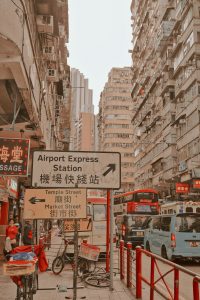
For decades, the concept of expatriate adjustment has centered on the traditional long-term assignment: a 3-to-5-year relocation to another country, often with family in tow. Researchers and practitioners alike have focused on how well expatriates adapt to the host country’s culture, their new workplace, and daily life abroad. But in today’s world of global work, this view is increasingly outdated.
The global workforce today is far more diverse and dynamic. We now see international business travelers, commuter assignees, flexpatriates, and global nomads—professionals who may live in one country, work across several, and rarely “relocate” in the traditional sense. And even for those who do relocate, the lines between “host” and “home” countries are blurring. In this landscape, the concept of adjustment needs a serious upgrade.
My colleagues and I have argued before that we need a better understanding of global professionals’ adjustment. In this post, I would like to take this one step further.
Adjustment Isn’t a Phase. It’s a Process.
Rather than viewing adjustment as a single phase that begins with relocation and ends after a few months, we’d be better advised to view it as a continuous, role-dependent process. Global professionals must constantly adjust—not just to new geographies, but to a variety of new roles.
Consider the types of roles they juggle:
- Leadership roles, often in culturally diverse teams that require inclusive and adaptive leadership styles.
- Boundary-spanning roles, where they mediate between headquarters and subsidiaries, or across functional and cultural divides.
- Family roles, particularly when juggling dual-career challenges or navigating long-distance relationships.
- Career roles, such as adjusting to new work expectations post-assignment, embarking on a more mobile career, or coping with reverse culture shock upon return.
- Stakeholder roles, where they must align with new clients, partners, or regulatory environments.
Each of these adjustments may require different resources, strategies, and timelines. Some are acute; others unfold gradually. Many occur simultaneously.
Beyond the Relocation: The Lifecycle of Adjustment
Adjustment doesn’t end when the suitcases are unpacked—or even when they’re packed again for the return. In fact, many global professionals face new waves of adjustment upon repatriation or reassignment. They must revise or redefine their professional identity, renegotiate their place in the organization, and often recalibrate their personal goals and relationships.
This means that HR professionals, team leaders, and even the global professionals themselves must expand their mental model of what “adjustment” entails. It’s not just about surviving in a foreign culture—it’s about thriving in complex, shifting global roles.
What Can Be Done?
- Organizations should move away from one-size-fits-all relocation support and instead provide ongoing, role-sensitive development.
- Managers should recognize the different forms of adjustment their global team members face, even if there’s no visible “move.”
- Global professionals should learn to expect and normalize adjustment as part of their long-term growth—not a hurdle to clear, but a capacity to build.
In short, it’s time to reconceptualize adjustment as a dynamic, role-centered, and career-spanning process. This shift will help global professionals navigate their complex journeys more effectively—and help organizations support them in ways that truly matter.

